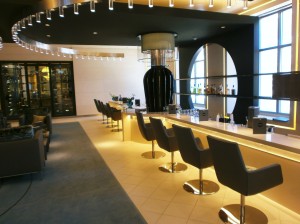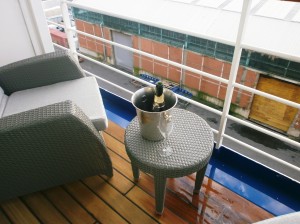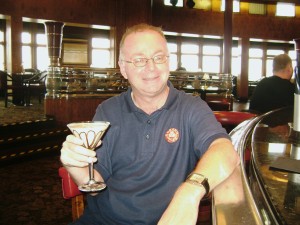On the face of it, winter is the ideal season for scores of sun deprived, pale faced Europeans to flee to the far warmer, more welcoming waters of the Caribbean.
And flee we do. Like hordes of migrating bluebirds, we follow the sun and pour up the gangways of the megaships, sailing from Miami, Fort Lauderdale and Port Canaveral to those sun splashed little island idylls. Snow, slush and bone chilling cold is no competition for the subtle, seductive lure of broad, bone white beaches, idly waving palms, and the indolent ‘no worries’ lifestlye that has always made the Caribbean so damned compelling in winter. On the face of it, it’s a no brainer.
Of course, the same holds broadly true for our American and Canadian friends, especially those bunkered down in that bitter winter bruiser known as the north east corridor. From Toronto down to Washington, DC, plane load after plane load of weary winter refugees sag gratefully into the open arms of benign Florida sunshine. The world and it’s wife can take care of itself for a week. It’s full speed ahead, destination sunshine.
And, while all of this is fine and dandy, it very much depends what you want from your Caribbean experience. If all you want is just a fun filled week in the sun, then fine. But, if you really want to get ‘under the skin’ of those self same islands, there are some other things you should know about the Caribbean winter cruise circuit.
OVERCROWDING
Any way you slice it, the winter Caribbean cruise circuit is very, very, crowded. Scores of ships that spend summers in Europe and Alaska flee like migrating birds of passage to the warmer, more welcoming Caribbean sun each fall, and stay there till the following spring.
This can mean some fantastic bargains in terms of fares, but trust me, there will be very little that is peaceful and quiet about those islands. Traffic is intense, and almost all of the main shopping streets are a glut of gold, tanzanite and diamond shops. Roads are busier, taxis more in demand. It takes longer to get anywhere and, inevitably, everywhere is much, much, more crowded. Little surprise, then, that tempers can sometimes run just as hot as the temperatures.
To give one example; back in December 2003, I saw no less than fifteen cruise ships stocked up at Cozumel, Mexico. Every pier was full. Some of the most famous and prestigious cruise ships in the world were obliged to anchor offshore, tendering their passengers in. By the time you factored in the off duty crews coming ashore from all of these ships, the result was a vast human tidal wave, well in excess of thirty thousand strong.
AND MORE ARE COMING…..
That was 2003. The count of new cruise ships coming on line since then is mind boggling. And more are coming.
Virgin Cruises wil debut a trio of enormous new cruise ships in a few years, each one bound for the winter Caribbean. MSC Cruises will also offer year round Caribbean cruises, with their enormous new Seaside-class vessels, too. Newbuilds from Royal Caribbean, Carnival and Norwegian Cruise Line will further add to the mix. Rather than getting calmer and more sedate, the Caribbean is going to get busier and louder. And there is no changing that.
SAME OLD, SAME OLD?
Many repeat Caribbean passengers are, quite frankly, getting bored with the same old islands. Warm and inviting as they are, the likes of St. Maarten, St. Thomas and Grand Cayman have become something of a well worn ‘greatest hits’ collection of Caribbean hot spots. So the cry goes up; what’s new? We want new!
And ‘new’ is what passengers will get. Well, kind of. Brand new cruise line developments such as Amber Cove and Harvest Caye, purpose built from scratch, provide the kind of safe, secure Caribbean experience that might well entice the old hands back, as well as wowing the newbies. How much connection these wonderful, almost Disney-esque places have to the actual, day to day experience of Caribbean living is another thing. But then, you’re not going to live there, are you?
Those points made, there are ways in which your winter Caribbean fun run can be kicked up by several notches. Here’s just a few points that you may find worthy of your august consideration.
FLY FURTHER SOUTH TO BOARD A SHIP
That’s right. Give Florida’s fun fuelled embarkation ports a complete swerve, and board a ship in, say, Barbados, or even Puerto Rico. Though you’ll still get the crowds, you are far closer to many of the islands themselves. On a typical, seven night cruise, you’ll hit at least six different island calls. Frantic yes, but you’ve got more chance of a richer, deeper experience. For many, this could be a deal breaker.
GO SMALLER
Forget those fun filled floating theme parks, and go for a voyage on the smallest, most exclusive ship that you can afford. The smaller they are, the more inclusive they seem to be.
The likes of Silversea, Star Clippers, Regent, Seadream, Seabourn and Crystal will all offer you salubrious, sybaritic indulgence on such a scale that the experience of cruising the Caribbean is massively elevated. These smaller ships can raise the bar- and the price- by quite a way, but the experience is truly unforgettable.
They can also often access the smaller, far more intimate islands, such as Jost Van Dyke and St. Barts, that the big ships have to bypass. Thus, your Caribbean experience becomes far more intimate, pared down and personal. In short; you get what you pay for.
But– even the most exclusive of ships will sometimes deliver you into the same massive crowds at the ‘greatest hits’ ports. Your six star, boutique ship may well look swanky and impressive when docked next to the latest floating death star at sea, but you will still be competing with its passenger load for access to taxis, beach space, and shopping and restroom facilities. Which is precisely why these de luxe ships try and avoid the busiest of these ports in peak season; sometimes successfully, sometimes less so. It’s horses for courses.
All of that said, none of the points up above should prevent you from running like a March hare to any of those islands in the sun during the winter. Maybe, like me, you are quite happy to relax on board quite a bit, and then just saunter off to a favourite, nearby beach for a few hours once the crowds have headed off for their day of pirating ashore. And, crowded or not, few things sooth the soul quite like a hammock on some sunny beach, with a feisty, frost crusted strawberry daiquri to hand, with warm sun, cool breezes, and the sound of reggae kissing your ears. It worked for me back in the Eighties, and it still works now.
Maybe I’m just weak and predictable, mind you.
The bottom line is that the Caribbean has it’s complications and flaws in winter, and some will find them maddening to the point of temporary distraction. But hey- a distracted day in paradise, noise, crowds and all, is still a giant leap for mankind better than a day driving through a blizzard to reach the factory or office.
On balance, get out there. Just be aware of the potential pitfalls, and choose accordingly.
And yes, I’m afraid that hammock is taken. Have a nice day.








































